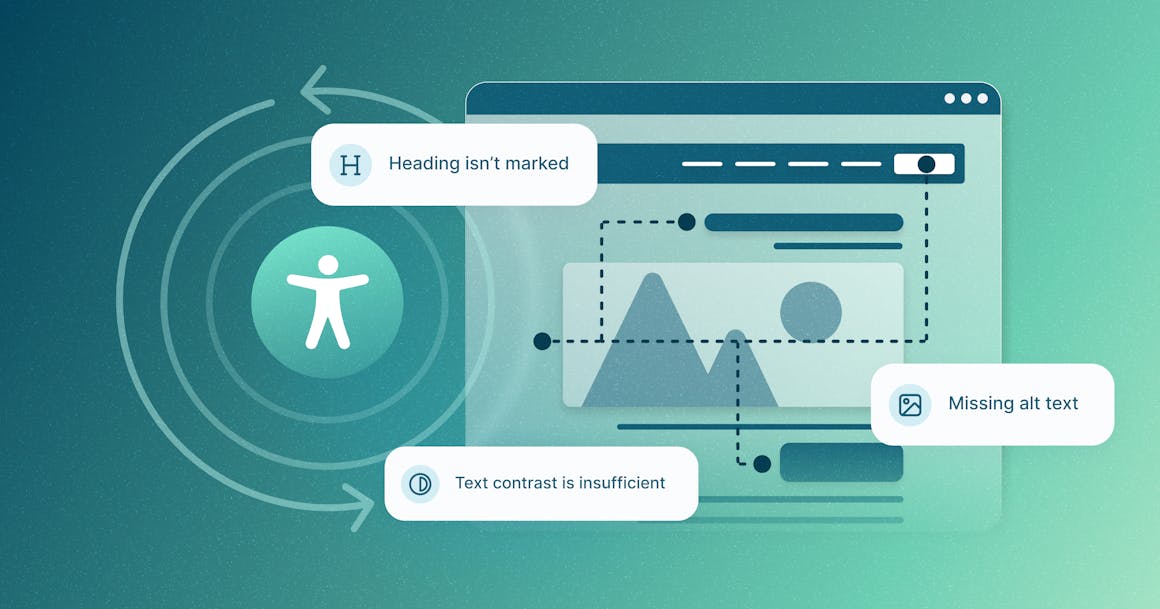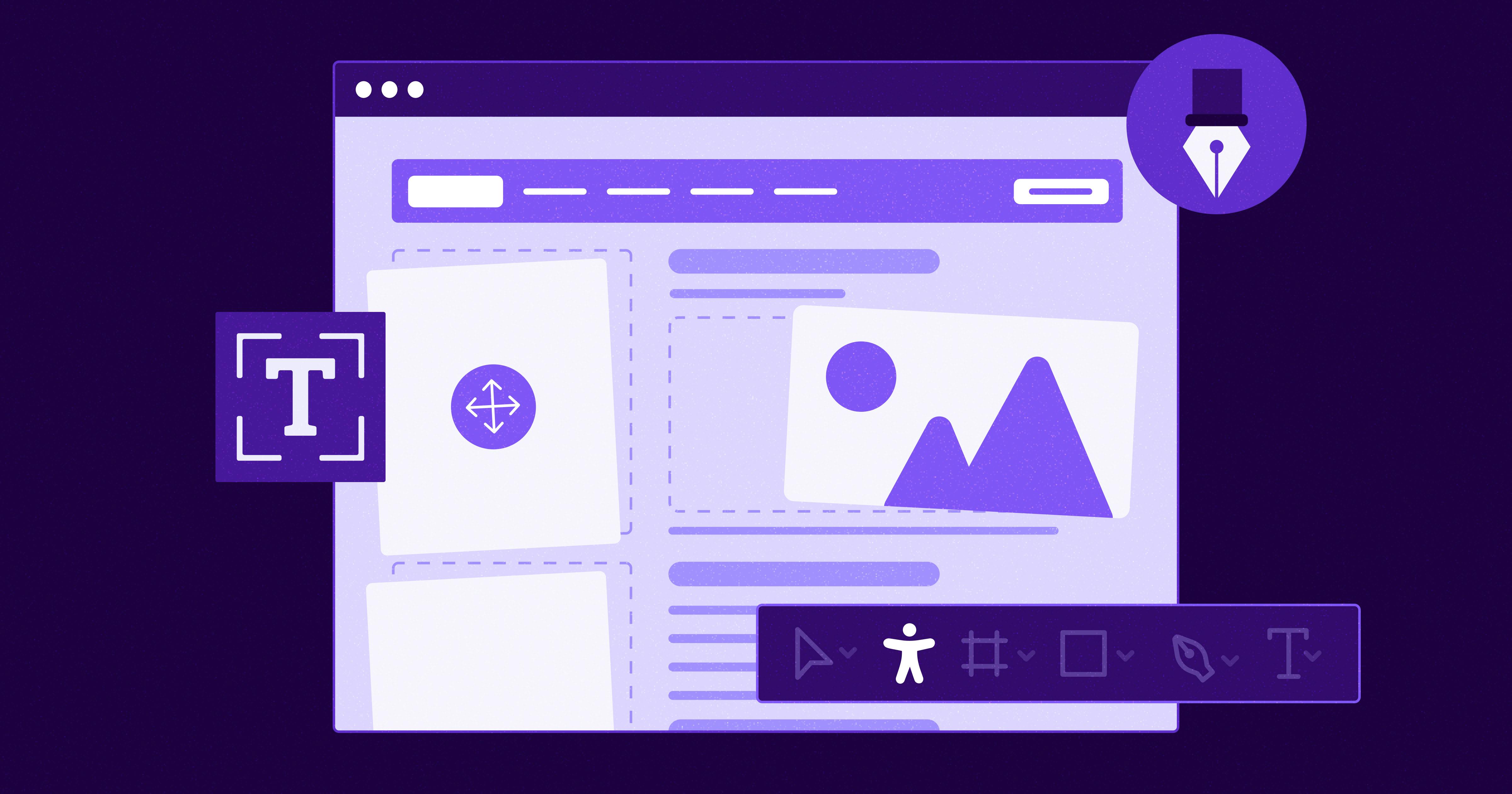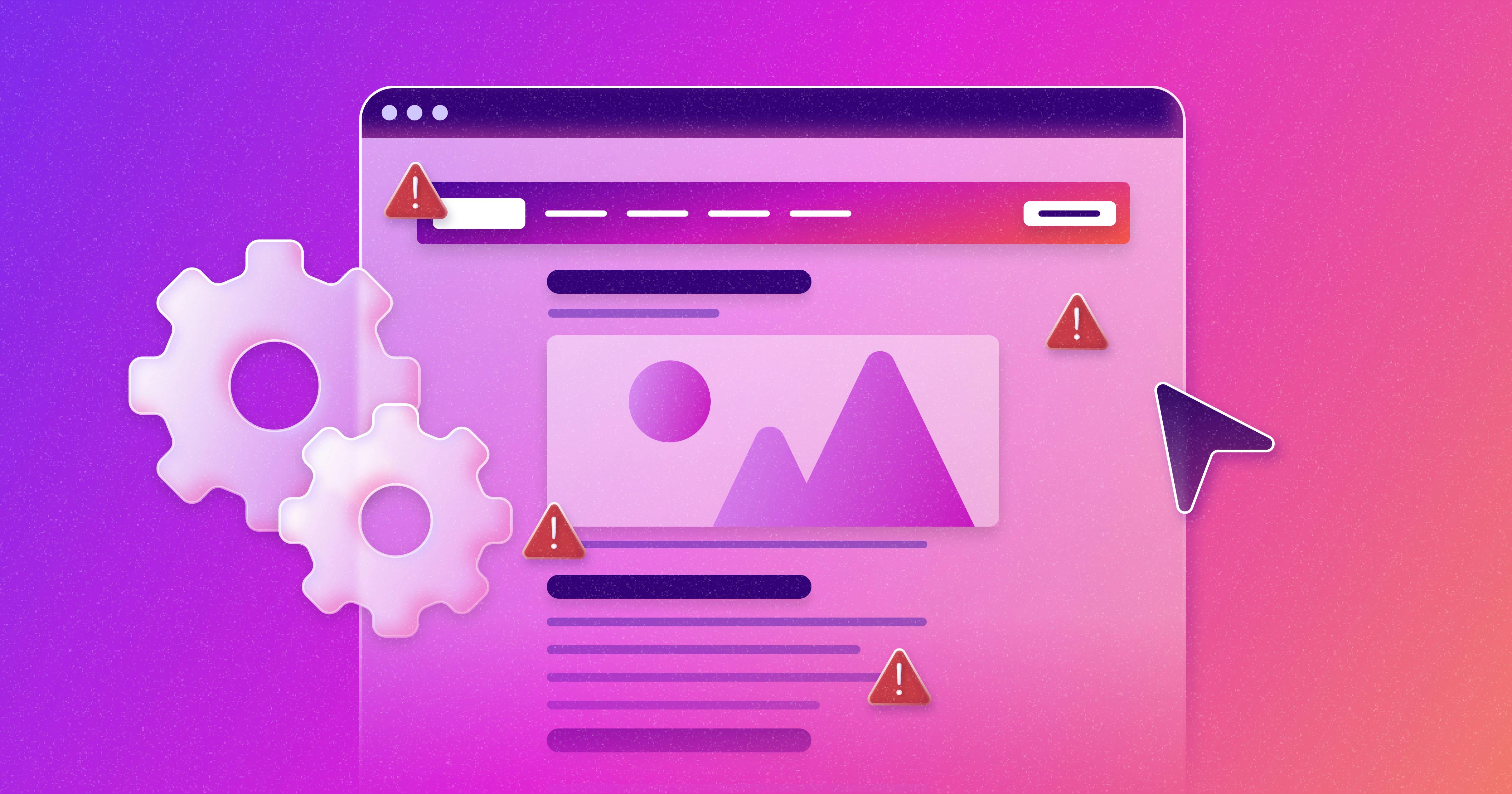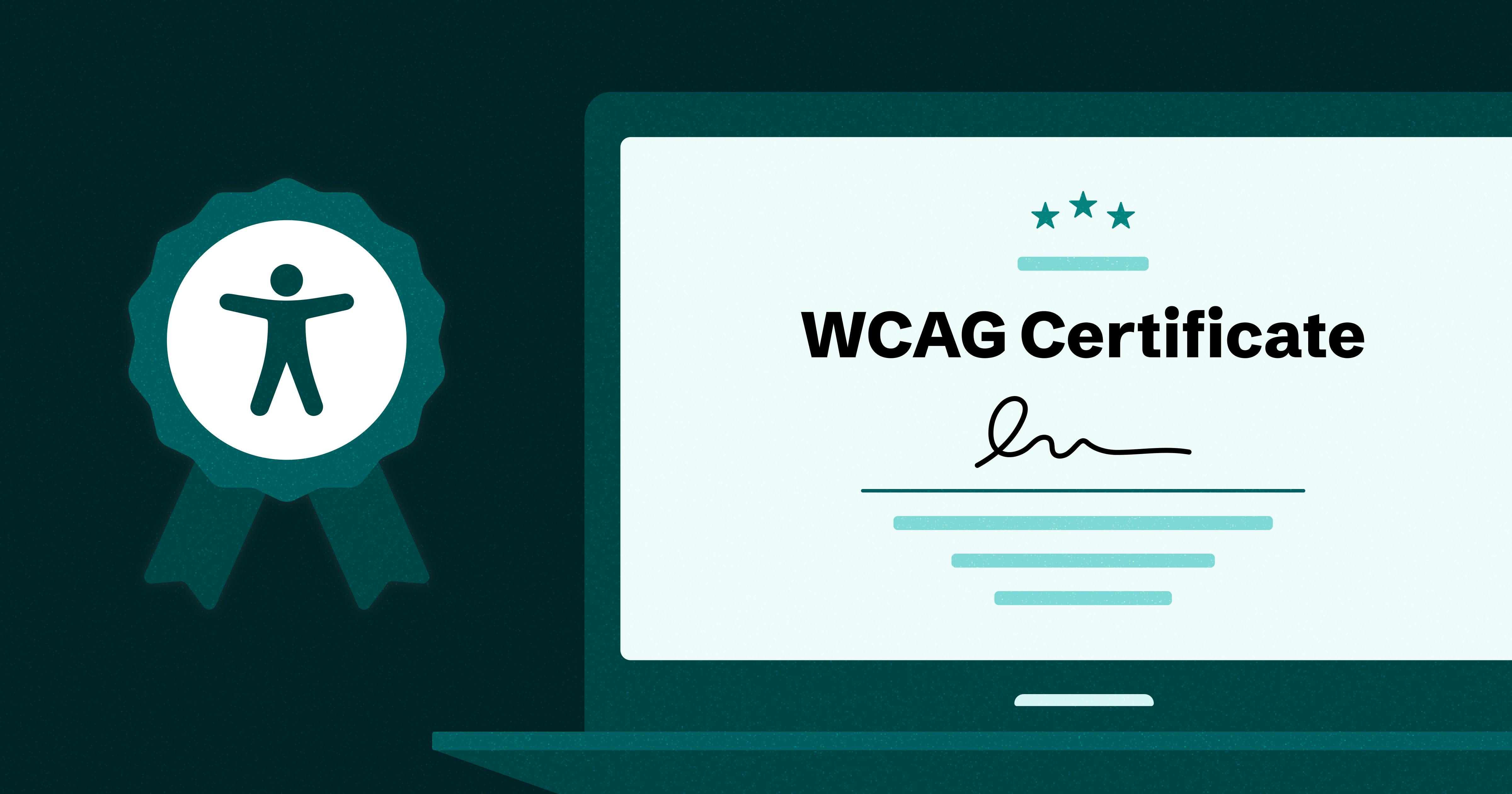Website Accessibility Software: What It Is, Why It Matters


Ready to see AudioEye in action?
Watch Demo
Discover the benefits and features of accessibility software, designed to make digital content usable for everyone and improve user experience.
For businesses of all sizes, complying with the latest web accessibility requirements can be challenging.
Not only are there plenty of accessibility laws and best practices to keep in mind, but the dynamic nature of most websites means web designers and developers are constantly testing the accessibility of new updates.
To save time and catch more accessibility issues, many businesses rely on a variety of web accessibility software, from programs that help designers test color contrast to automated testing tools that can find and fix accessibility issues on web pages in real time.
In this blog post, we break down the different kinds of web accessibility software, explain why accessibility testing matters, and discuss how organizations can use technology to help deliver an accessible, compliant browsing experience to every website visitor.
What Is Accessibility Software?
Accessibility software refers to tools and technologies designed to help find and fix accessibility issues on websites and other digital channels. Some of these tools can be manually operated by web designers and developers, while others automatically test web content for conformance with accessibility standards like the Web Content Accessibility Guidelines (WCAG).
Depending on the tool, some solutions also include automated remediations for common accessibility issues, such as skipped heading ranks or unlabeled form fields. Other issues that web accessibility software can identify include empty link descriptions, missing image alternative text, and poor color contrast.
Website Accessibility Software and Compliance
In recent years, the number of web accessibility-related lawsuits has steadily risen, peaking at a record 3,255 lawsuits in 2022.
For many businesses, staying on top of accessibility compliance can be overwhelming. Fortunately, web accessibility testing tools are designed to identify accessibility issues that can expose businesses to the risk of legal action. Most of these tools test content against WCAG 2.1, the de facto international accessibility standard referenced by a number of laws, including Titles II and III of the Americans with Disabilities Act (ADA), Section 508 of the Rehabilitation Act, and the European Accessibility Act (EAA).
One thing to remember is that simply installing web accessibility software won’t guarantee that your website isfully accessible orada compliant — despite what some misleading marketing efforts might lead you to believe. In fact, some accessibility issues can only be identified by manual testing, includingscreen reader testing and usability testing.
Choosing the Right Web Accessibility Software and Services
Choosing the right mix of web accessibility software is key to delivering accessible, compliant experiences to all users, including people with disabilities.
Depending on your organization’s internal resources, you may want to consider solutions that include manual testing tools. Or you might want a solution that does everything for you, including custom fixes for accessibility issues that cannot be resolved with automation alone.
You'll also want to factor in which CMS your website is built on, as it may have unique requirements for monitoring and maintaining accessibility. For example, keeping a WordPress site ADA compliant involves regularly checking plugins to ensure they don't interfere with accessibility standards.
To get started, create a list of your current accessibility needs and obstacles, such as:
- How large is your website(s) and how often does it change?
- Do you have a library of accessible page templates, components, and common user workflows?
- How do you currently get feedback on the accessibility of your website?
- Do you currently have tools or developer environments to test the accessibility of code updates against the latest accessibility standards?
Depending on how you answer these questions, you may want to prioritize accessibility solutions that offer automated testing and remediation, manual testing, ongoing accessibility training (which can help you develop accessibility leaders and experts inside your organization), dedicated legal support, manual testing that involves assistive technology, mobile app testing on android and iOS, and more.
Need help choosing the right accessibility solution? Check out our comprehensive guide tochoosing an accessibility platform.
Top Website Accessibility Software
Platforms such as Level Access, Deque, and AudioEye offer varying levels of tools and human support, depending on your accessibility needs:
AudioEye
AudioEye is a digital accessibility platform that combines both automated and expert human testing to find and fix accessibility issues. Once installed, AudioEye continuously scans websites against the latest wcag standards to identify accessibility issues, automatically resolving common issues and flagging ones that require additional review or human intervention.
AudioEye also offersrobust developer tools to let developers test the accessibility of new code in their preferred pre-production environment.
Deque axe DevTools
Designed to help developers find and fix accessibility issues during the development process, Deque’s axe DevTools is made up of multiple testing tools that enable developers to test the accessibility of html code and web components throughout the development process.
Level Access
Level Access is an accessibility platform that features a number of tools and solutions to help organizations design, build, and maintain digital experiences that comply with accessibility requirements and provide a high-quality user experience.
Want to learn more about the different tools available to your organization? Check out our breakdown of 15 automated accessibility testing tools.
Why You Need Accessibility Software
One of the biggest challenges in digital accessibility is the size and fluid nature of the internet. Most websites change all the time, and each of these updates is a chance to accidentally introduce new accessibility barriers.
For that reason, it’s difficult for businesses of all sizes to maintain their site’s accessibility without the support of accessibility software.
In 2023, AudioEye scanned nearly 40,000 enterprise websites as part of its first Digital Accessibility Index and found that the average page had 36.8 accessibility issues that could be detected by automation alone.
That’s a staggering number — and it speaks to the need for automation to help surface and resolve these issues. In fact, many of the issues detected — such as missing image alternative text, skipped heading ranks, unlabeled fields, and empty link descriptions — could easily be resolved through a combination of automation and human intervention.
Want to get a sense of how many accessibility issues are on your website? AudioEye’s freeWeb AccessibilityChecker can scan any URL against the latest WCAG guidelines, helping you understand where your site’s accessibility falls short of user expectations and the law.
Why Accessibility Software Matters
Creating accessible websites isn’t just about meeting legal standards or reaching more customers — it’s also a fundamental principle of digital ethics and inclusivity. By following the best practices of accessible design and establishing a clear plan for accessibility testing, organizations can make meaningful strides toward more accessible, compliant digital experiences.
Addressing accessibility issues promptly not only reduces the risk of legal action but also strengthens brand reputation and customer trust. According to a recent study by Unilever, 33% of global consumers choose to buy from brands they believe are doing social or environmental good.
The benefits of inclusivity don’t end with increased revenue, either. Another study found that consumers are 6x more likely to protect a company’s image when a brand develops a strong perspective on social and environmental issues.
Fortunately, user-friendly accessibility software can streamline digital accessibility initiatives and make it easier for businesses to create and maintain accessible, compliant digital experiences.
Get Ahead of the Accessibility Curve With AudioEye
Ready to take the next step on your digital accessibility journey? Our Accessibility Scanner is the perfect starting point, providing you with a high-level look into the accessibility of your existing content. AudioEye’s Automated Accessibility Platform then provides automated fixes for common accessibility issues, with more complex issues handled by our team of human experts. With our suite of accessibility tools, you can design and build digital experiences that are accessible to all users.
Get started with afree accessibility scan or try ourfree color contrast checker.
Ready to see AudioEye in action?
Watch Demo
Ready to test your website for accessibility?
Share post
Topics:
Keep Reading

7 Websites That Got Accessibility Right (and What You Can Learn)
Looking to create an accessible website? See how seven companies utilized accessibility best practices to create a seamless user experience that works for all.
accessibility
April 11, 2025

Why People + Automation Is the Right Approach to Accessibility Testing
Discover how using both automated and manual accessibility testing is the perfect approach to creating accessible, compliant digital content.
accessibility
April 08, 2025

Is WCAG Certification Possible? 6 Things You Need to Know
While WCAG standards don’t offer official certification, there are training programs and professional credentials that can boost your accessibility expertise. Learn more.
accessibility
April 03, 2025
